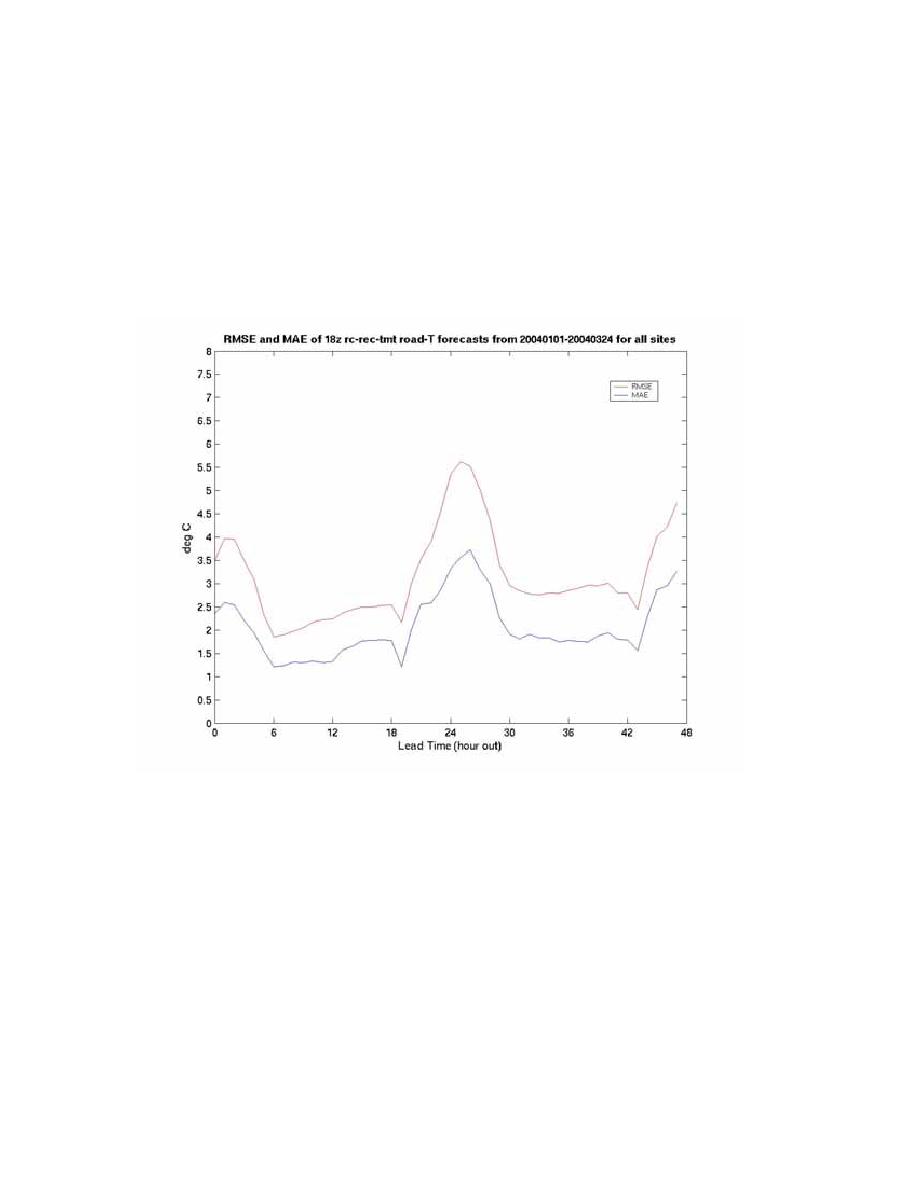
As an alternative to RMSE, the median absolute error (MAE) has also been calculated for
road temperature. Commercial weather service providers often use this metric over
RMSE. The big difference between RMSE and MAE is that extreme values are discarded
when MAE is calculated. Thus MAE values are, in general, lower than RMSE values.
This is clearly evident in the plot that compares RMSE and MAE for the 18z initialized
forecasts, using recommended treatments. While diurnal and forecast length trends were
very similar using both error calculations, the error magnitudes were 2-5.5C for RMSE
and only 1.25-3.5C for MAE (Fig. 11.11).
Fig. 11.11. Seasonal analysis of RMSE versus MAE for road temperature.
In an attempt to assess forecast quality at times when it is of greatest interest and
consequence to MDSS/RWFS users, RMSE and bias were assessed for times when the
road temperature was observed to be less than 40F (4.44oC), and compared to those for
any observed temperature. The RMSE values were very similar at night (6-18 and 30-42
hr lead times). This was expected since the observed nighttime road temperatures were
usually less than 40F during the winter and spring (Fig. 11.12). During the day (18-30
hr lead times), the RMSE values for forecasts made when the observed road temperature
was less than 40F were better than the forecasts made over all times. The bias values for
forecasts made when the road temperature was less than 40F were relatively
insignificant and the diurnal trends were similar to those seen for forecasts made over all
111



 Previous Page
Previous Page
